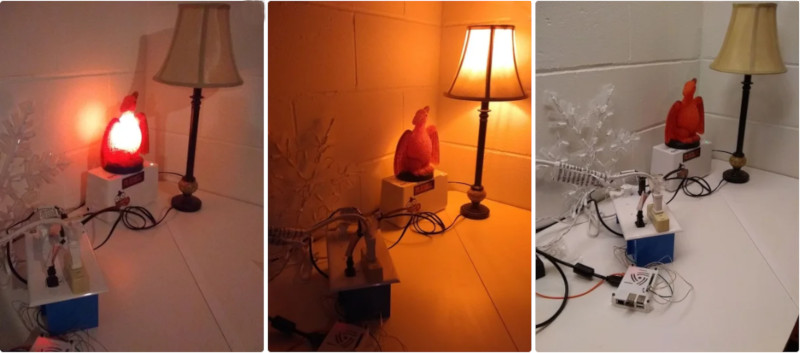Whether you’re getting ready for work in the morning, or heading out on a camping trip in the woods, it’s nice to know what to expect when the weather rolls over the horizon. To keep abreast of things, [natethecoder] built a lamp system to stay across weather alerts.
A Raspberry Pi 3 acts as the heart of the system, with Node Red responsible for running the show. Querying the web every 5 minutes for updated weather data, it keeps track of weather alerts, as well as incoming snowfall. For a basic weather watch, a yellow lamp is lit, while there’s a red lamp for more serious warnings. A Christmas decoration serves as the indicator for snow. The lamps are all controlled by mains-rated solid state relays, making it easy to swap out the lamps for other devices if so desired down the track. There’s also a lamp test subroutine that fires on startup to ensure everything is working correctly.
It’s a handy way to get your weather info at a glance, and would prove useful to anyone living in a storm-prone area. For something more portable, consider this umbrella that tells you the weather.















Is that really a good example of safe wiring?
It looks like a mess (involving both low voltage and high voltage wires in the same
rats nest). Would think it would be better to have some physical separation between
high voltage and low voltage portions. (So if insulation breaks down, or a wire comes loose
there is still no chance of getting high voltage out on those signal lines.)
Seems like hack a day should be showcasing examples where people did things (like handling high voltage safety) well.
(Or if it is an example of how not to do it, then should say so in the article.)
Also – seems a shame to be polling for weather updates.
Weather forecasts don’t change that much – should be service out there which will push
information to you when there is an update, rather than wake up every 5 minutes to check.
(Use push notificaiton, with maybe a poll every hour just in case you missed a push.)
Admittedly I would build the RPi into the case of the plug box, or more likely a micro on a board with the relays, but I see nothing to suggest there’s a risk of high voltage meeting low voltage.